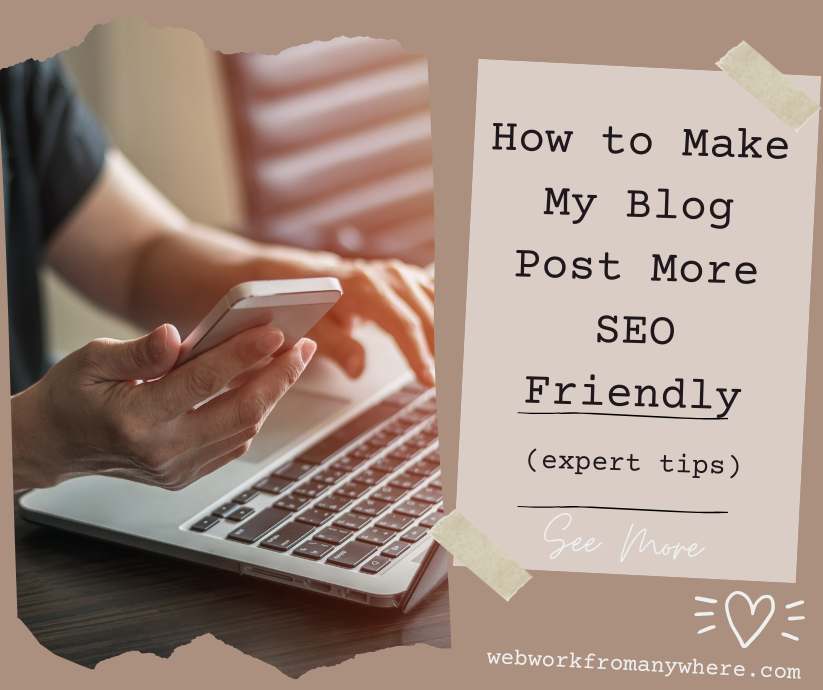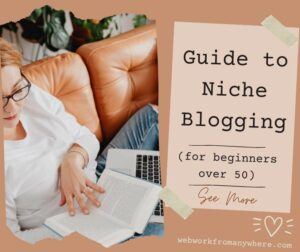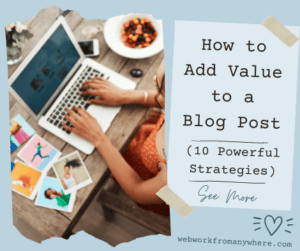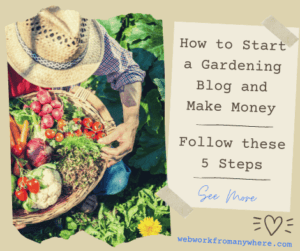Search Engine Optimization sounds intimidating, doesn’t it? But here’s the truth: you don’t need to be a tech wizard to make your blog posts shine in search results. With a few strategic tweaks, you can create content that both Google and your readers will love.
Let’s look at the essentials in How to Make My Blog Post More SEO Friendly that actually move the needle!
1. Start with a Title That Makes People Stop Scrolling
Your title is your first (and sometimes only) chance to grab attention. Skip the boring stuff like “Tips for Baking” and go for something that sparks curiosity: “10 Secret Baking Tricks That Make You a Pastry Pro.”
See the difference? One makes you yawn, the other makes you click!
A reliable formula that works: Best X for Y. Think “Best Paris Hotels for Romantics” or “Best Noise-Canceling Headphones for Writers.”
These titles target specific audiences, which means better engagement and higher conversions.
2. Understand What Your Reader Actually Wants

This is where most people get SEO wrong. They stuff keywords without thinking about why someone is searching in the first place.
There are four types of search intent:
- Informational: They want to learn something (“how to run a marathon”)
- Navigational: They’re looking for a specific site (“Wikipedia”)
- Commercial: They’re researching before buying (“laptops under $500”)
- Transactional: They’re ready to purchase (“book Hawaii volcano tour”)
Match your content to the intent. If someone’s searching “how to,” they don’t want a sales pitch. If they’re searching “buy,” don’t make them wade through 2,000 words of background info.
3. Write for Humans First, Search Engines Second
Here’s what Google actually cares about now: does your content genuinely help people? Is it written by someone who knows what they’re talking about?
Focus on E-E-A-T (Experience, Expertise, Authoritativeness, Trustworthiness). Share your real experiences. Show your work. Be the kind of resource you’d actually want to find.
Read your draft out loud. Does it sound like a human wrote it, or like you’re trying to trick a robot? Your readers can tell the difference, and so can AI search tools.
4. Optimize for AI Search (Yes, It’s a Thing Now)
ChatGPT, Google’s AI Overviews, Claude.ai, Perplexity – these tools are changing how people search. And they love content that:
- Answers questions directly and clearly
- Uses natural, conversational language
- Includes quotable facts and statistics
- Structures information logically
Think of it this way: AI search tools are reading your content and summarizing it for users. Make it easy for them to understand and quote you accurately.
5. Structure Your Content Like You Care About Your Readers
Wall-of-text paragraphs are sooo bad for SEO. Break things up with:
- Clear H2 and H3 headings (like you’re seeing here)
- Short paragraphs (1-3 sentences on mobile)
- Bullet points where they make sense
- White space that gives eyes a break
Your readers are skimming first, reading second. Make it scannable.
6. Don’t Skip the Technical Stuff
Yes, I know it’s boring, but these matter:
- Write a compelling meta description with your main keyword
- Keep your URL slug clean and keyword-rich
- Add alt text to every image (describe what’s actually in the photo)
- Use your keyword naturally in the first 200 words and in at least one H2 heading
- Compress your images so they don’t slow down your site
Use plugins like ShortPixel or TinyPNG to handle image compression automatically.

7. Add Visuals (Your Readers Will Thank You)
Images break up text and keep people engaged. Videos increase time on page, which Google loves. Even better if you can embed a relevant YouTube video – it shows you’re providing comprehensive information.
Just make sure everything loads fast. A beautiful site that takes 10 seconds to load is useless.
8. Link Strategically
Internal links help readers discover more of your content and help search engines understand your site structure.
Add 2-3 links to related posts on your own blog. Use descriptive anchor text like “learn more about keyword research” instead of “click here.”
External links to high-quality sources (think reputable publications, .edu or .gov sites, established experts) boost your credibility.
You’re showing Google you’ve done your research and you’re not afraid to cite your sources.
9. Tell People What to Do Next
Every post should have a clear next step. Do you want readers to download your guide? Read another post? Try your recommended product? Make it obvious with a clear call to action.
Don’t leave people wondering “okay, now what?”
10. Make It Mobile-Perfect
Over 60% of searches happen on mobile devices. If your post looks great on your laptop but terrible on a phone, you’re losing readers. Check your formatting on mobile—those 4-line paragraphs probably need to be shortened.
11. Get the Word Out
Once you hit publish, don’t just sit there. Share your post on Pinterest, Facebook, TikTok – wherever your audience hangs out. On Pinterest, you can create multiple pins for the same post over time.
Then tell Google and Bing directly about your new post using their URL inspection tools. It’s like sending them a “hey, new content here!” notification.
Video: The Complete Guide to SEO
12. Remember: SEO Is a Marathon, Not a Sprint
You’re not going to hit page one overnight, and that’s okay. SEO is about consistency, quality, and genuinely helping your readers. Keep learning, keep refining, and most importantly, keep creating content you’re proud of.
The blogs that win are the ones that don’t give up.






